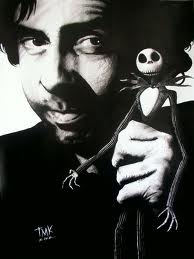Critical Thinking, Framing, and Red Wine

What else should I have?
I like wine, especially red wine. My tastes range from elegant to earthy. In fact, I’m not terribly discriminating – I like to sample them all.
I also feel the need to justify my red wine indulgences. So I’m always looking for news about the positive health effects of drinking red wine. (This is a classic case of System 2 rationalizing a decision that was initially made – for entirely different reasons — in System 1. My System 1 made the decision; my System 2 justifies it.)
As you may know, there’s plenty of good news about red wine and good health. Generally, drinking red wine is associated with better health and longer life. It’s a J-shaped curve, “…light to moderate drinkers have less risk than abstainers, and heavy drinkers are at the highest risk.” Drink a little bit and you get healthier; drink too much and you get unhealthier.
Is there a cause-and-effect relationship here? It certainly hasn’t been proven. All we’ve been able to show so far is that there is a correlation. A change in one variable is correlated to a change in another variable. Just because variable A happens before variable B, doesn’t mean that A causes B. (That would be the post hoc, ergo propter hoc fallacy as the President points out in West Wing).
Yet many scientists have assumed that there is a cause-and-effect relationship and framed their studies accordingly. The typical approach is to break down the various elements of red wine to isolate the ingredient(s) that cause the beneficial health results. Is it ethanol? Is it resveratrol? Notice the assumption: there is something in the wine that causes the beneficial health result. The studies are narrowly framed.
Is this good critical thinking? Maybe not. Maybe we’re framing too tightly and assuming too much. Maybe there’s a third variable that causes us to drink red wine and be healthier.
I started thinking about this when I stumbled across a study conducted in Denmark more than a decade ago. The Danish researchers didn’t study wine. Rather, they looked at human behavior. More specifically, they looked at 3.5 million grocery store receipts.
The Danish researchers asked three interrelated questions: 1) What do wine drinkers eat? 2) Is this different from what non-wine-drinkers eat? 3) If so, could the differences in overall diet be the cause of the health effect?
The researchers looked at several specific combinations:
- What else did people who bought wine – but not beer – buy at the grocery store? (This group comprised 5.8% of the 3.5 million receipts)
- What else did people who bought beer – but not wine – buy at the grocery store? (6.6% of the total receipts).
- What else did people who bought both beer and wine buy at the grocery store? (1.2% of the total receipts).
I won’t try to summarize everything but here’s the key finding:
“This study indicates that people who buy (and presumably drink) wine purchase a greater number of healthy food items than those who buy beer. Wine buyers bought more olives, fruit or vegetables, poultry, cooking oil, and low fat products than people who bought beer. Beer buyers bought more ready cooked dishes, sugar, cold cuts, chips, pork, butter, sausages, lamb, and soft drinks than people who bought wine. Wine buyers were more likely to buy Mediterranean food items, whereas beer buyers tended to buy traditional food items.”
So, does wine cause good health? Maybe not. Maybe we framed the question improperly. Maybe we’ve been studying the wrong thing. Maybe it’s the other things that wine drinkers do that improve our health. As usual, more studies are needed. While I wait for the results, I think I’ll have a nice glass of Priorat.
When Should You Name Your Baby?

University of Guanajuato
In 1980, Suellen and I moved to Mexico where I was invited to teach at the University of Guanajuato. A lovely mountain town about 200 miles northwest of Mexico City, Guanajuato is rich in history, culture, and tradition. It’s the heart of the Bajío, a broad, fertile region known as the breadbasket of Mexico. Graham Greene’s novel, The Power and The Glory, uses the Bajío as a backdrop.
My students were in their twenties and getting married and having babies. During our year in Guanajuato, Suellen and I were invited to any number of “baby welcoming” parties. About a month after a baby arrived, the parents would host a party to introduce the baby to family, friends, and neighbors. It was like being a very small debutante.
The parties were quite touching. Attendees took note of the fact that a new member of the community had arrived. We implicitly agreed to help the child grow and prosper. We also told stories, offered advice, and gave presents.
At many of the parties, the baby did not yet have a name. I often asked about this: “Why haven’t you named the baby yet?” The more-or-less standard response: “We’ve only just met him. We need to live with him for a while to learn which name fits him best.”
I sometimes noted that, in the United States, we typically named our babies well before they arrived. To which one of my students remarked, “No wonder you gringos are so screwed up. You all have the wrong names!”
So when should you name your baby? It was a question I had never considered before… and that’s the point here. A central tenet of critical thinking is that we should question our own assumptions. As the world has changed, have our assumptions changed as well? Are they still valid? Were they ever?
But how do you question your assumptions if you don’t realize that you’re making assumptions? I assumed that one should name a baby before it arrives. I never questioned it. Why would I? It’s the natural order of things, isn’t it?
So, how do you uncover your unknown assumptions? Here are a few things that have worked for me:
- Learn a new language – many assumptions are bound up in our language; especially the metaphors we use. Learn a new language and you’ll pick up new metaphors and identify hidden assumptions.
- Travel to a different country – paraphrasing Yogi Berra, you can learn a lot just by observing.
- Talk to people who aren’t like you – living in a diverse community (or working in a diverse company) helps you think more clearly. You probably won’t suffer from groupthink.
- Study history – it’s amazing what people used to think.
- Ask yourself a simple question – why do I think that?
Questioning your assumptions doesn’t necessarily mean that you should change them. You may find that they still work quite well. We didn’t change our baby naming assumptions, for instance. We named Elliot well before he arrived and he turned out just fine (I assume).
A Joke About Your Mind’s Eye
Here’s a cute little joke:
The receptionist at the doctor’s office goes running down the hallway and says, “Doctor, Doctor, there’s an invisible man in the waiting room.” The Doctor considers this information for a moment, pauses, and then says, “Tell him I can’t see him”.
It’s a cute play on a situation we’ve all faced at one time or another. We need to see a doctor but we don’t have an appointment and the doc just has no time to see us. We know how it feels. That’s part of the reason the joke is funny.
Now let’s talk about the movie playing in your head. Whenever we hear or read a story, we create a little movie in our heads to illustrate it. This is one of the reasons I like to read novels — I get to invent the pictures. I “know” what the scene should look like. When I read a line of dialogue, I imagine how the character would “sell” the line. The novel’s descriptions stimulate my internal movie-making machinery. (I often wonder what the interior movies of movie directors look like. Do Tim Burton’s internal movies look like his external movies? Wow.)
We create our internal movies without much thought. They’re good examples of our System 1 at work. The pictures arise based on our experiences and habits. We don’t inspect them for accuracy — that would be a System 2 task. (For more on our two thinking systems, click here). Though we don’t think much about the pictures, we may take action on them. If our pictures are inaccurate, our decisions are likely to be erroneous. Our internal movies could get us in trouble.
Consider the joke … and be honest. In the movie in your head, did you see the receptionist as a woman and the doctor as a man? Now go back and re-read the joke. I was careful not to give any gender clues. If you saw the receptionist as a woman and the doctor as a man (or vice-versa), it’s because of what you believe, not because of what I said. You’re reading into the situation and your interpretation may just be erroneous. Yet again, your System 1 is leading you astray.
What does this have to do with business? I’m convinced that many of our disagreements and misunderstandings in the business world stem from our pictures. Your pictures are different from mine. Diversity in an organization promotes innovation. But it also promotes what we might call “differential picture syndrome”.
So what to do? Simple. Ask people about the pictures in their heads. When you hear the term strategic reorganization, what pictures do you see in your mind’s eye? When you hear team-building exercise, what movie plays in your head? It’s a fairly simple and effective way to understand our conceptual differences and find common definitions for the terms we use. It’s simple. Just go to the movies together.
